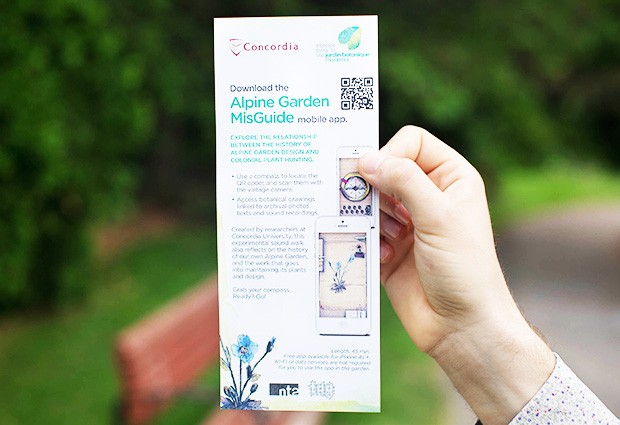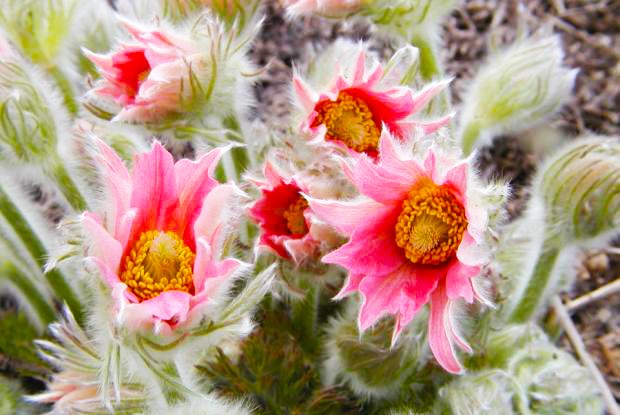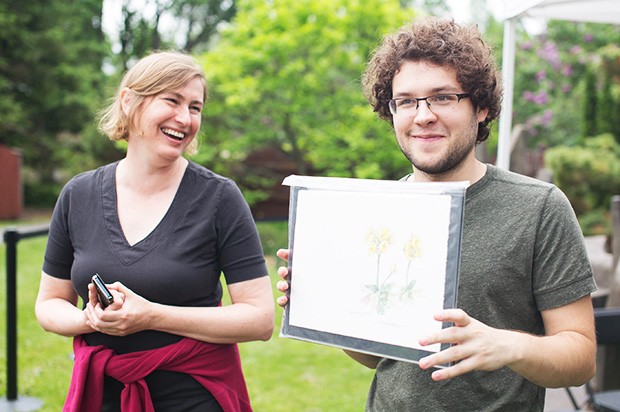The private (digital) life of plants
 The Alpine Garden MisGuide seeks to “play with garden visitors' expectations.” | Photo by Mattias Graham
The Alpine Garden MisGuide seeks to “play with garden visitors' expectations.” | Photo by Mattias Graham
The future of media meets the history of gardening in a smartphone app developed by Jill Didur, chair of Concordia's Department of English.
Her Alpine Garden MisGuide, now available free of charge in English and French, is an example of the fast-growing field of "locative media" — software designed for use in, and about, a particular geographic area. The location in question here is the Alpine Garden at Montreal's Jardin Botanique, near the Olympic Stadium.
Once downloaded, Didur's app connects to QR codes dotted around the Alpine Garden to take visitors far beyond the limits of ordinary museum audio guides. Text, sound and photos combine in this sophisticated and elegant app, which was designed and programmed by Concordia graduate Ian Arawjo (BCompSc 14).
"As a literature scholar, I started by thinking people would just read what I wanted to tell them," Didur says, laughing. "But we soon realized that we need audio and visuals, too, so people can listen while they're at the site, and then maybe read the text later, on their way home on the Metro."
‘The most chic form of gardening’
Didur’s Alpine Garden MisGuide explores several of her research interests: post-colonial literature, landscape gardening and the environmental humanities.
App users learn about the history of alpine gardening and the western "plant-hunters" who brought back previously unknown specimens from far-flung mountain ranges. There are also behind-the-scenes peeks at how the Montreal Alpine Garden is maintained.
Didur chose the word "MisGuide" for the app's name in an effort "to play with garden visitors' expectations." Rather than simply providing the usual information about various plants, the app aims to "redirect visitors’ attention" to the relationship between the different places and cultures where they originated, the history of colonial plant hunting, and how the plants are displayed and maintained in the contemporary garden.
 Pulsatilla vulgaris 'Dissecta' (common name: Prairie crocus, or pasque flower) from the Alpine Garden. | Photo by Gilles Murray, courtesy of Jardin Botanique de Montréal
Pulsatilla vulgaris 'Dissecta' (common name: Prairie crocus, or pasque flower) from the Alpine Garden. | Photo by Gilles Murray, courtesy of Jardin Botanique de Montréal
"My idea was to describe not specific plants, but why this garden is the way it is," says Didur. "Why does it have this aesthetic, this distinctive gardening style?"
One reason is that Alpine Garden was opened in the mid-1930s, during a half-century-long fad for this particular style in the U.K. and elsewhere. At the time, alpine settings were considered "the most chic form of gardening" and Didur wants visitors "to understand the cultural history — why they're seeing what they're seeing."
The art of interdisciplinary collaboration
Putting together an attractive and user-friendly app is not part of the traditional job description for an English professor. But the MisGuide’s three-year development demonstrates how Concordia's resources are being combined in new, interdisciplinary ways.
Arawjo, the app’s programmer and designer, was a Concordia undergraduate when he began work on the project. He has since graduated with a double major in Computation Arts and Computer Science.
Didur and Arawjo built the app in consultation with the new-media research hub Le Laboratoire NT2 Concordia and the university's interdisciplinary TAG (Technoculture, Art and Games) centre.
 Jill Didur and Ian Arawjo at the recent launch of the Alpine Garden MisGuide. | Photo by Mattias Graham
Jill Didur and Ian Arawjo at the recent launch of the Alpine Garden MisGuide. | Photo by Mattias Graham
Furthermore, Concordia students performed the voice acting on the app's audio track, as well as participating in the Alpine Garden MisGuide’s video trailer. And when Didur and Arawjo first approached the Jardin Botanique, they found another Concordian: Alpine Garden horticulturalist René Giguère (BSc 79, Biology).
As Didur notes, this kind of media is still in its infancy. "I wanted to show that locative media can be used for environmental storytelling," she says. "And what better place for that than a garden? There are still many more relevant possibilities to pursue: apps about sustainability at the Botanical Garden — how they conserve water there, and so on."
The Alpine Garden’s René Giguère agrees. "We're ahead of our time. Others will follow."
Didur intends to help them find the way: aided by a grant from the Social Sciences and Humanities Research Council of Canada, she will be following her app with a book-length manuscript that examines the potential of locative media in environmental storytelling.
Find out more about Jill Didur at Concordia. Download the Alpine Garden MisGuide.